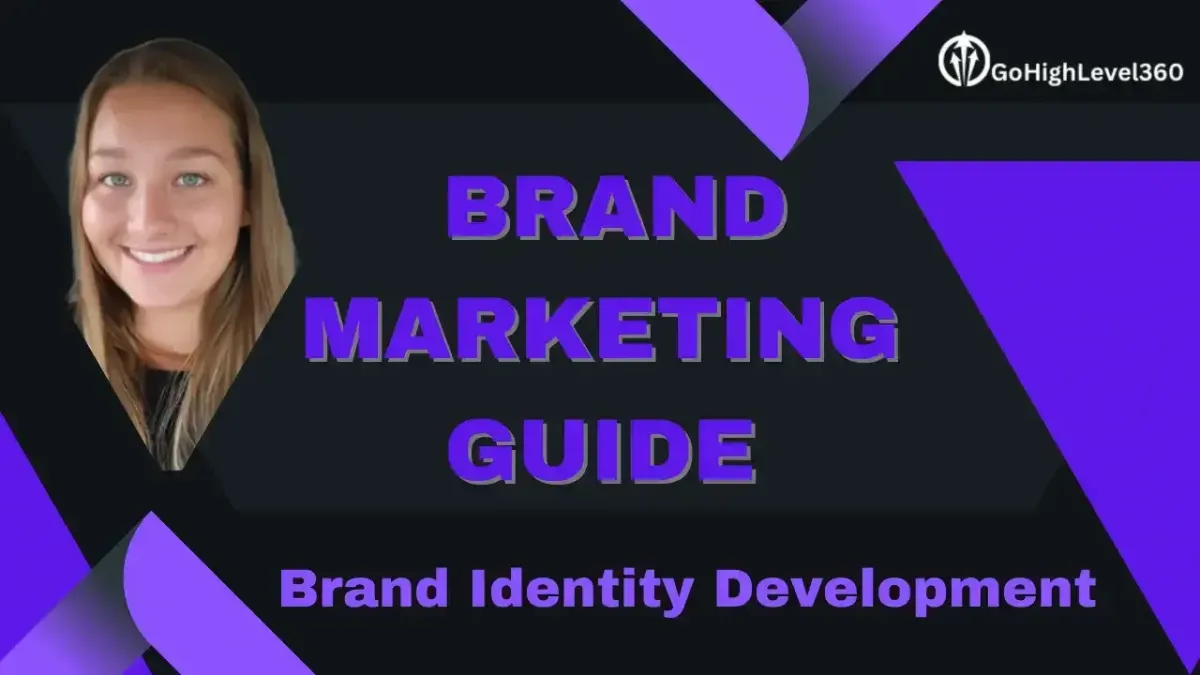"Great leaders inspire action, empower others, and lead by example."
Go High Level 360 Brand Identity Development

1. Understanding Brand Identity
Brand identity is the collection of all elements that a company creates to portray the right image to its consumers.
It encompasses everything that makes your brand unique and recognizable, including your logo, colors, typography, messaging, and overall visual and verbal style.
A strong brand identity is essential for differentiation and building emotional connections with your audience.
A robust brand identity not only distinguishes a brand in a crowded marketplace but also fosters loyalty and trust among customers.
2. Components of Brand Identity
Logo: The visual symbol representing the brand, which should be simple, memorable, and reflective of the brand’s essence.
Color Palette: The set of colors used consistently across all brand materials. Colors evoke emotions and associations, making them a powerful tool in brand recognition.
Typography: The fonts and styles used in brand communications. Typography sets the tone for the brand’s voice and personality.
Imagery: The style of images and graphics associated with the brand. Consistent imagery enhances brand storytelling and visual appeal.
Voice and Tone: The style of communication used in brand messaging. It should be consistent across all channels and resonate with the target audience.
Tagline: A memorable phrase that captures the essence of the brand, often reflecting its mission and values.
3. Steps to Develop a Strong Brand Identity
Conduct Brand Research: Understand your market, audience, and competitors. This research lays the foundation for informed decision-making.
Define Your Brand’s Core: Clarify your mission, vision, and values. These elements form the backbone of your brand identity.
Create Brand Guidelines: Develop a comprehensive guide that includes all elements of your brand identity. This document ensures consistency across all brand touchpoints.
DesignYour Logo: Create a logo that reflects your brand’s personality and values. It should be versatile and adaptable for various uses.
Choose Your Colors and Typography: Select a color palette and fonts that align with your brand identity. These choices should enhance brand recognition and convey the right message.
Develop Your Brand Voice: Decide how your brand will communicate with its audience. This includes defining the tone, language, and style used in all communications.
Apply Your Brand Identity Consistently: Ensure all brand materials and communications are consistent with your brand guidelines. Consistency reinforces brand recognition and trust.
4. The Role of Design in Brand Identity
Design is a critical aspect of brand identity. It involves creating visual elements that reflect the brand’s personality and values.
Good design can make a brand more recognizable and memorable, helping to create a positive impression and build trust with the audience.
Effective design goes beyond aesthetics; it’s about creating a cohesive visual language that communicates the brand’s story and values.
From packaging to digital presence, every design element should align with the brand’s identity and message.
5. Case Studies of Successful Brand Identities
Apple: Known for its sleek, minimalist design and consistent branding across all touchpoints. Apple’s brand identity is synonymous with innovation, simplicity, and premium quality.
Coca-Cola: Famous for its distinctive red color, cursive logo, and classic imagery. Coca-Cola’s consistent use of these elements has created a timeless and globally recognized brand.
Nike: Recognizable for its “swoosh” logo and bold, inspirational messaging. Nike’s brand identity is built around athleticism, performance, and empowerment, which is reflected in its design and marketing strategies.
6. Common Mistakes in Brand Identity Development
Inconsistency: Failing to apply brand elements consistently across all platforms. Inconsistency can dilute the brand message and confuse the audience.
Overcomplication: Using too many colors, fonts, or design elements. A cluttered design can be overwhelming and detract from the brand’s core message.
Ignoring Audience Preferences: Not considering the tastes and preferences of the target audience. Understanding the audience is crucial for creating a resonant brand identity.
Lack of Clear Guidelines: Not having a comprehensive brand guideline document. Without guidelines, maintaining consistency and coherence becomes challenging.
7. Final Thoughts
Developing a strong brand identity is crucial for establishing a recognizable and trustworthy brand.
By understanding the components of brand identity and following a structured development process, businesses can create a lasting and impactful brand presence.
A well-crafted brand identity not only differentiates a brand in the marketplace but also fosters deeper connections with the audience, driving loyalty and growth.
Consistency, clarity, and alignment with the brand’s core values are key to successful brand identity development.
8. FAQs
What is the difference between brand identity and brand image?
Brand identity is how a brand presents itself to the world, while brand image is how the public perceives the brand.
How often should a brand update its identity?
Brands should periodically review and update their identity to stay relevant but avoid frequent changes that may confuse the audience.
Can a small business develop a strong brand identity?
Yes, even small businesses can develop a strong brand identity by focusing on consistency, authenticity, and understanding their audience.
Why is a brand guideline document important?
A brand guideline document ensures that all brand elements are used consistently, maintaining a cohesive and professional brand image.
Why should more focus be on the brand's promise and integrity rather than the logo?
A logo is just a symbol; the true strength of a brand lies in its ability to deliver on its promise with integrity. This builds lasting trust and loyalty with customers.
